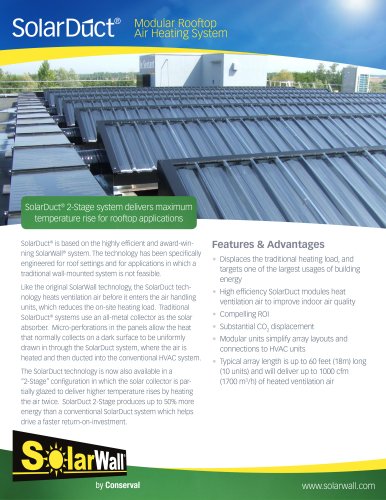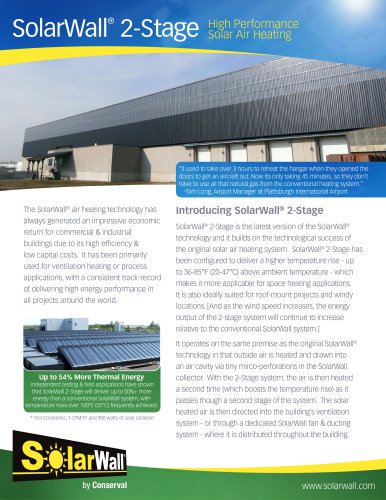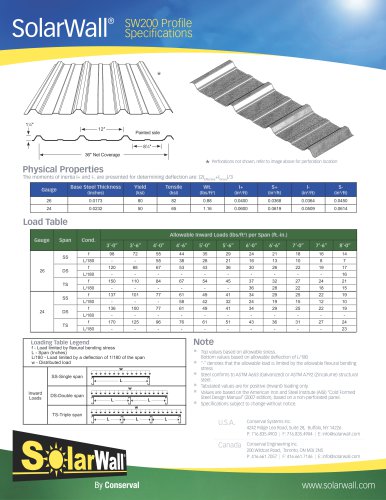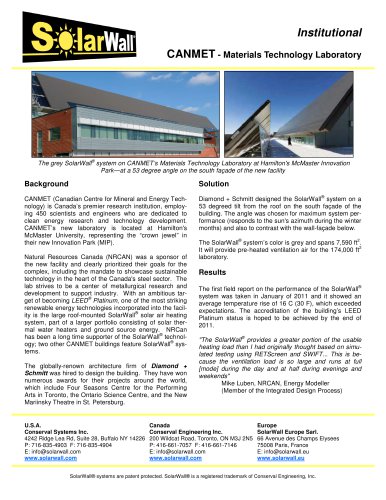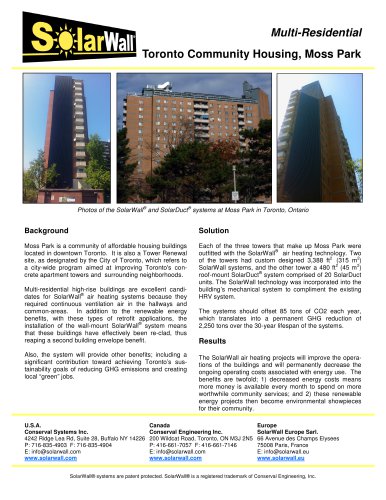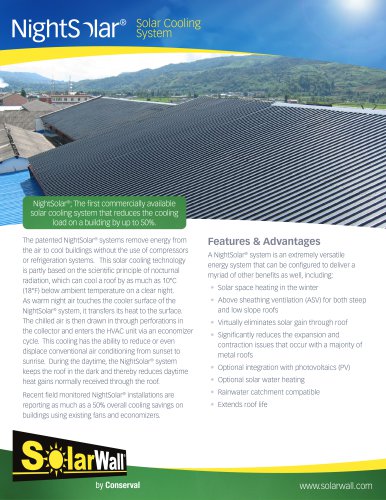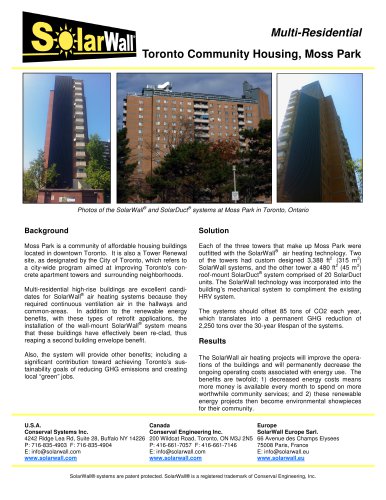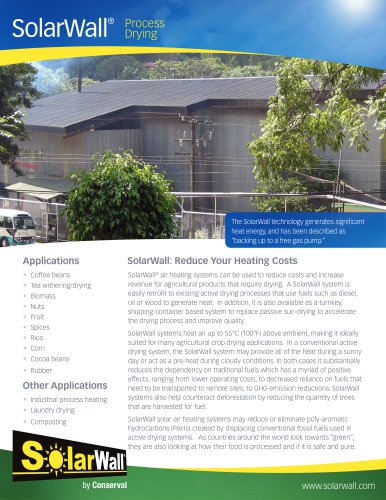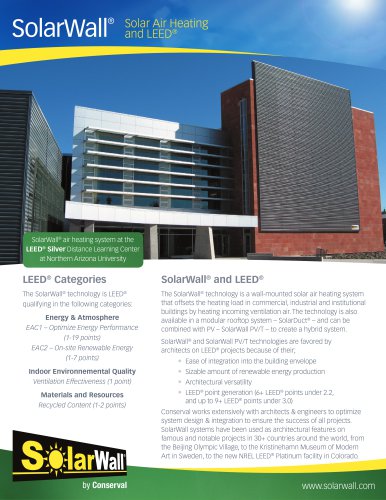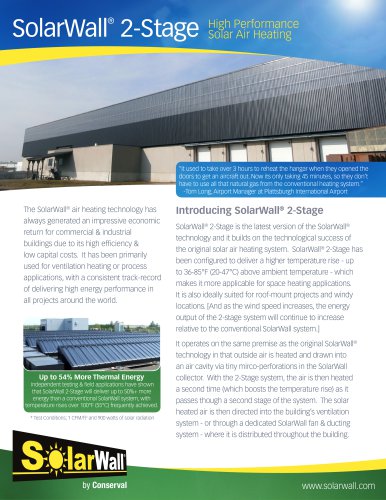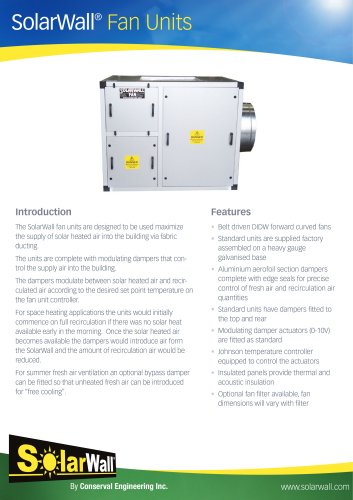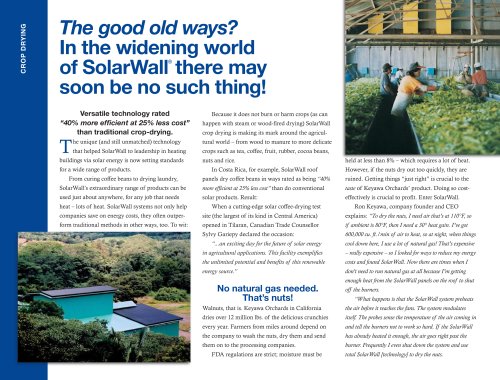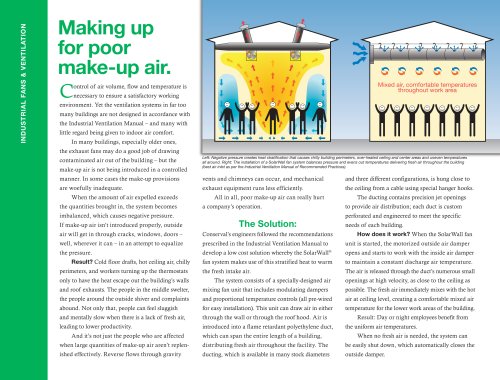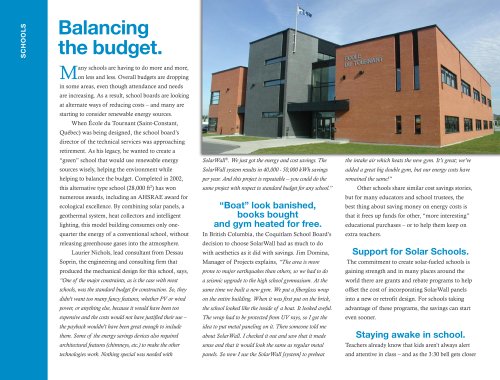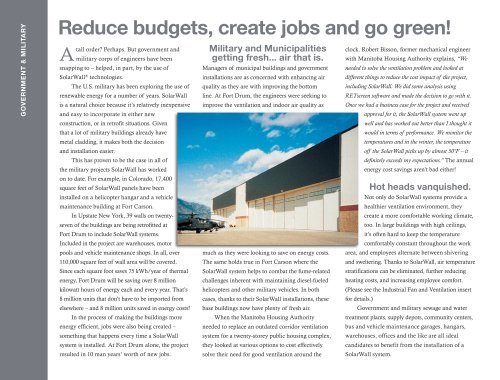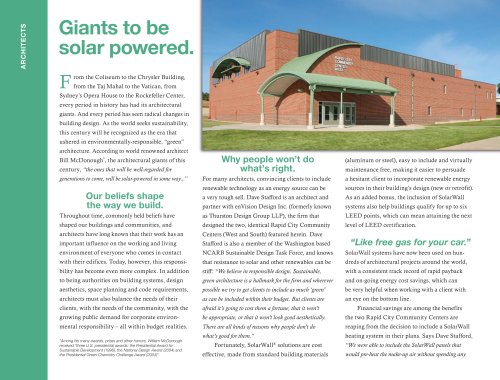
Catalog excerpts
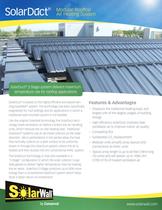
Modular Rooftop Air Heating System SolarDuct® 2-Stage system delivers maximum temperature rise for rooftop applications SolarDuct® is based on the highly efficient and award-winning SolarWall® system. The technology has been specifically engineered for roof settings and for applications in which a traditional wall-mounted system is not feasible. Like the original SolarWall technology, the SolarDuct technology heats ventilation air before it enters the air handling units, which reduces the on-site heating load. Traditional SolarDuct® systems use an all-metal collector as the solar absorber. Micro-perforations in the panels allow the heat that normally collects on a dark surface to be uniformly drawn in through the SolarDuct system, where the air is heated and then ducted into the conventional HVAC system. The SolarDuct technology is now also available in a “2-Stage” configuration in which the solar collector is partially glazed to deliver higher temperature rises by heating the air twice. SolarDuct 2-Stage produces up to 50% more energy than a conventional SolarDuct system which helps drive a faster return-on-investment. Features & Advantages •• Displaces the traditional heating load, and targets one of the largest usages of building energy •• High efficiency SolarDuct modules heat ventilation air to improve indoor air quality •• Compelling ROI •• Substantial CO2 displacement •• Modular units simplify array layouts and connections to HVAC units •• Typical array length is up to 60 feet (18m) long (10 units) and will deliver up to 1000 cfm (1700 m3/h) of heated ventilation air
Open the catalog to page 1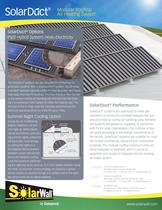
Modular Rooftop Air Heating System SolarDuct® Options PV/T Hybrid System; Heat+Electricity The SolarDuct® product can also be used for PV/thermal cogeneration systems. With a SolarDuct PV/T system, the all-metal SolarWall® absorber doubles as the PV-racking system and draws heat away from the PV modules. This heat energy is then ducted to the nearest rooftop air handling unit and then into the building’s conventional HVAC system to offset the heating load. The removal of the PV heat cools the modules and enhances the electrical operating efficiency of the PV (up to 10%). Summer Night...
Open the catalog to page 2All Conserval Engineering catalogs and technical brochures
-
Solar Air Heating
2 Pages
-
SW200 Profile Specifications
1 Pages
-
Solarwall
5 Pages
-
Institutional
1 Pages
-
Multi-Residential
1 Pages
-
Nightsolar
2 Pages
-
SolarWall Process Drying
2 Pages
-
SolarWall 2-Stage
2 Pages
-
SolarWallFans_2010
11 Pages
Archived catalogs
-
Crop Drying
2 Pages
-
Schools
2 Pages
-
Government & Military
2 Pages
-
Commercial Buildings
2 Pages
-
Industrial
2 Pages
-
Architects
2 Pages
-
SolarDuct and SolarDuct PV/T
2 Pages
-
Solarwall Brochure
7 Pages

